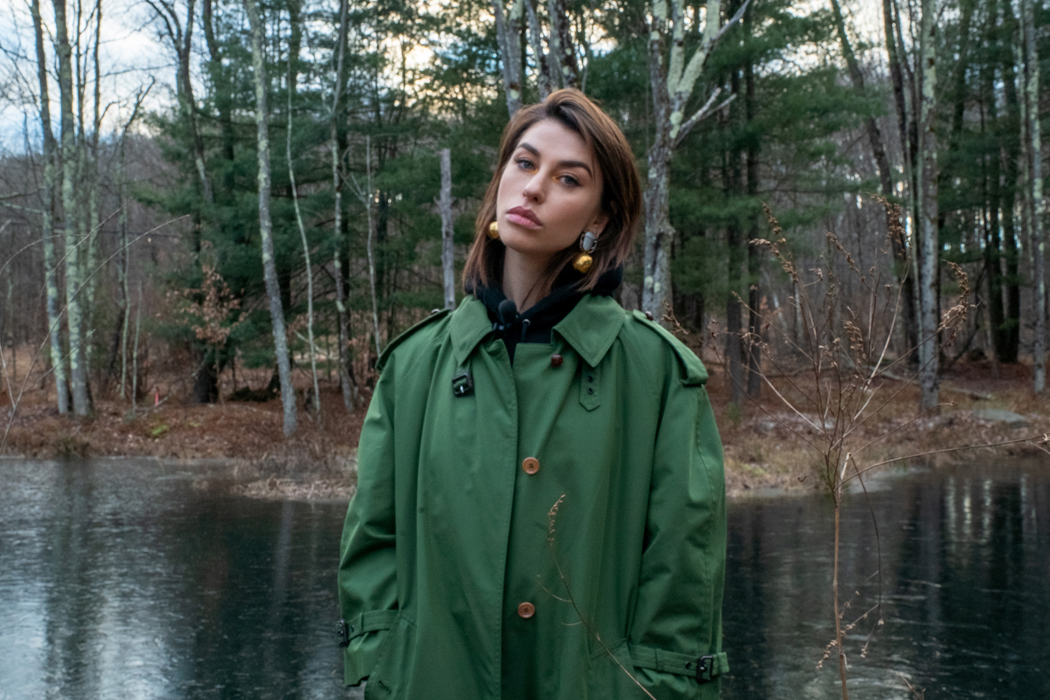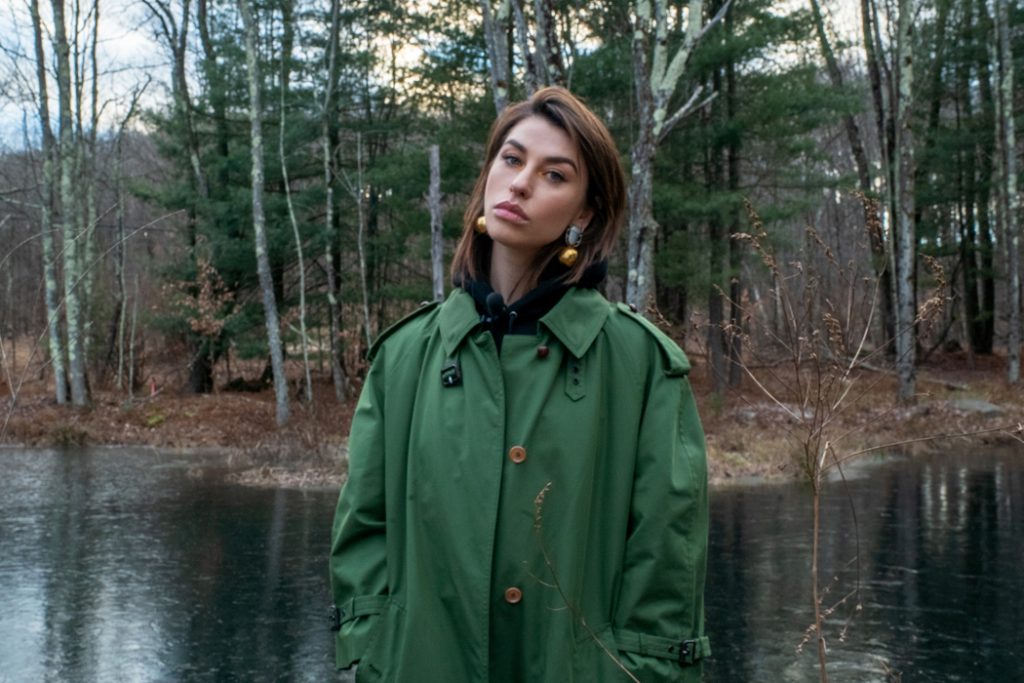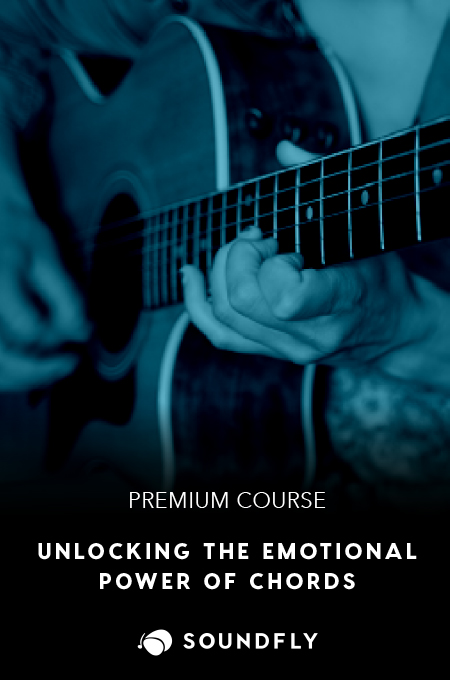
+ Improve your songwriting with Soundfly! Explore our range of courses on emotional chord progressions, basic songwriting technique, songwriting for producers, and many more.
In case you haven’t heard, Soundfly just launched our brand new course with Kimbra, in which she demystifies the techniques and creative inspirations behind her music and some of her songs specifically. And because I, too, am a singer and songwriter from New Zealand, I wanted to share my own reflections of Kimbra’s music and what it means to me.
Somehow, as talented as she is, Kimbra rocketed to prominence on a song she didn’t even write. Her success as a featured artist on Gotye’s “Somebody That I Used To Know” earned her two Grammys and made her the first New Zealander to have a US #1 hit. This paved the way for her own songs to subsequently live long and happy lives on the Billboards.
But Kimbra has been winning songwriting awards and accolades for most of her life. Already accomplished and contest hardened as a kid, it was her second single, “Simply on My Lips,” a New Zealand release caught the ears of British producer Mark Richardson and she was auditioned, then signed to Warner Bros. She then relocated to Melbourne at 17 years old to work on her debut album, Vows.
Once there, she set about her focused pursuit of pop princess-dom underpinned by musical artistry. Her signature hyper-capable vocals, guitar chops, and growing studio competence plus her increasingly individual lyricism and sonic explorations become a heady mix. Creative with a capital C, her visual representation was also dramatic, eclectic and fearless; a complete package, her work ethic and performance well-covered.
With time has come maturation, a broader thematic outlook, connection and collaborations with multiple artists across more genres than you can shake a stick at. And now we can look back on Kimbra’s extremely strong, empowered catalog and reflect.
Below is a detailed trip through my four favourite Kimbra songs and why I love them, and remember to check out her brand new course on Soundfly here.
1. “Goldmine”
From her second album, The Golden Echo, “Goldmine” is a fine display of trademark Kimbra-isms. She always brings such great groove from the get-go. Here with a nod to the chain gang, she builds single note vocals into chordal beds and happily matches acoustic with electronic textures. The track is dusted with the pitter-patter of synth arpeggios and sonics. But the infectious rhythm never dulls.
Kimbra is nothing if not dynamic — both vocally and in her song structures. A key example can be found in this song’s pre-chorus, which strips back to the intimate in lyric and arrangement before ripping into a full-throated multi-vocal chorus.
The slight menace in her pop-to-the-left also comes from the D minor chord progression ( i-VI-iv-v) and the surprise borrow from a parallel major (D major – I) in the second part of the verse. She tweaks the unease with a three-line pre-chorus while her verse-chorus paradigm is a solid four lines.
Lyrically, it’s darkly metaphorical with old school preachings, simple images spun into evenly accented spondees (“mud lands, white sound, dark night, cold ground”) before the single color accent (“gold!”) is let loose repeatedly in the chorus. This is mirrored in the accompanying video.
Melodically, it’s highly singable. I had the privilege of playing an unplugged solo acoustic guitar version of “Goldmine” with a mixed ability drama class of 25 kids for an end of the year concert, and it worked a treat. They devoured the Old Testament references, hammed the emotive pre-chorus and sang the living bejesus out of that chorus!
2. “The Build Up”
Kimbra’s tunes translate, yet remain great vocal vehicles for her own considerable skills. She can use her voice to lure an audience into a potentially discomforting arena cossetted by her chart-dwelling repertoire.
“The Build Up” is the final track on Kimbra’s debut album, Vows. It was both a surprise end to a finely wrought pop album and a portent of what was on the horizon for an artist with such a refined aesthetic palette. Can’t imagine it was a label pleaser, but Kimbra ain’t vanilla!
The version I love is a two-minute micro track enmeshed with her Archibald Prize-winning portrait featuring young woman in red dress on a sumptuously manchestered bed, reflective, regretful, cataloguing wants without obligations. The scansion in the lyrics solidifies the rhythm and underlines the repetition, which forgives the lack of a chorus, but oh how it builds…up!
Here again is a muted vocal bed and this time the rhythm is the antithetical non-banger, with an off-kilter clunk toy piano and xylophone motif for the two chord A-B major chord progression. Through the post-apocalyptic soundscape quietly keens Kimbra. With her feel for phrasing, she pushes and pulls at the simple melody in quietude, using every aspect of her vocal tracts and near asthmatic inhalations.
There’s a tumble of images and love gone wrong, loss and searching. There’s the yearning to get out of a small town (we call her hometown Hamilton “the Tron”), and the shock when you finally do.
“I want to run far from this grey town,
You’re on every street, marked on the ground,
I want momentum but not the pace,
Want the price but not the raise.”
It’s as if you’ve just read someone’s diary and so want to put it down, but you can’t.
3. “Hi Def Distance Romance (Reimagined)”
That overhanging question of whether there’s more was resoundingly and repeatedly answered by Kimbra’s ongoing musical forays, hungry for influence and connection. There are multiple mentions of music she loves: R&B, hip-hop, Buckley and Silverchair, smoky jazz, and candyfloss pop.
As a result, she has interfaced with a raft of producers over the years, each one exploring new aesthetics and techniques. This openness and curiosity has led to further revisitations of her work.
I cite this song partly to speak to the breadth of Kimbra’s appeal. My step daughter (20) saw her live in 2020 at MEOW, a 400-seat venue in Wellington, and loved the intimate concert and connection with the audience, chatting and cracking jokes. Sufficed to say we were in collusion for choosing this track as a favourite. That’s Kimbra’s music speaking to those deeply below and above her own 30 years.
How is she connecting with both demographics? Simple: the girl can write.
This song was first released on Kimbra’s third album, Primal Heart. Here is a person clearly in the 21st century with a lyric drenched in specific detail from the use of the short hand (“hi def”) to the normalcy of long-distance lovers separated by time zones and tech as much as mileage. It’s instantly authentic and current, and a terrific metaphor.
The emotional tone achieved with arpeggiated guitar shimmering through the opening i/v minor chords, with their triplets and suspended inversions, is pretty and hollow. And the harmonic arrangement reinforces this with rising and falling bass notes and piano cascades.
The time signature of 6/8 — rarely used in pop these days — is almost self-soothing as her title line is a panned counterpoint to the soaring chorus. Kimbra brings in her full melodic range.
Three other Kimbra lyric techniques to note are internal rhyme of “glitching the picture of you” and the near identity of “weakening lights” and “weekend nights” in a chorus whose language a lover of any age could sing. Her topic movement in verse two introduces a new character — the paramour’s mother — and contextualizes the singer’s lonesome perspective on a very domestic view heightening the “tyranny of distance” even more.
4. Kimbra x Dawn – “Version of Me”
I love Kimbra with all the trimmings, but here she is neat — no ice and, well, not much else than the body and voice — it simply rocks. This song is a masterclass in vocal duet harmonizing. “Version of Me” features the splendid R&B artist Dawn, whose rich contralto is a perfect counterfoil for Kimbra’s voice.
In an interview about their collaboration Dawn said, “I thought it would be amazing if we could intertwine vocally and tell our story from different perspectives at the same time.” Naturally, their companion video, shot by videographer Micaiah Carter, upholds that interweaving concept by featuring the two women wearing nothing but their voices; and tastefully interlocked. They move slowly and carefully, balletically supporting and observing each other.
At first read, the lyrics are also naked, with the singer taking ownership of her flaws and failings, wincing at her words as flames and lack of prioritizing a relationship. In the duet version, the lyric takes on new layers of meaning with Dawn and Kimbra together, pulling into focus the hurt and misunderstanding that the poison of entrenched racism continues to shower on everyone it infects.
There’s stateliness about these vocal performances — almost classical in their accuracy. There’s plenty of space allocated to both timbres and the blend is delicious. However, the inflections are totally R&B; a lovely single note on “fire” at the end of the third line held by Kimbra while Dawn’s lower descending melismatic run is exquisitely on point.
Goosebumps.
Social protest was not the vehicle Kimbra chose to ride in her early career, but clearly enough is enough and her artistic responses are skilled, connected, and uplifting. Bravo to Kimbra and her unceasing restlessness! Bravo to her ever evolving, ever growing body of work!
Ready to Learn From Kimbra Herself?
Grammy Award winning star and world-renowned artist and songwriter, Kimbra opens up her creative process to students for the first time in this comprehensive course with Soundfly. Explore how she finds inspiration, improvises over an idea, pinpoints the focus for a song, and expertly produces compelling tracks with her innovative approaches to singing, arranging, production, and more. Whether you’re an aspiring vocalist yourself or a producer interested in treating the voice as one of many tools in your creative shed, this one-of-a-kind course will help you develop new methods for making compelling music.
Join Kimbra: Vocal Creativity, Arranging, and Production today.





